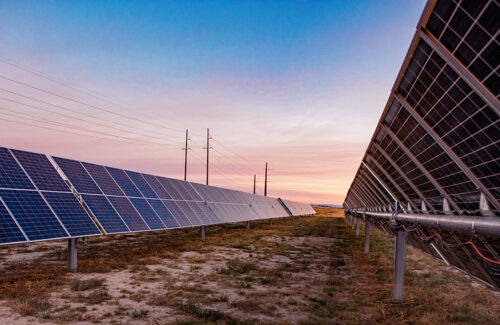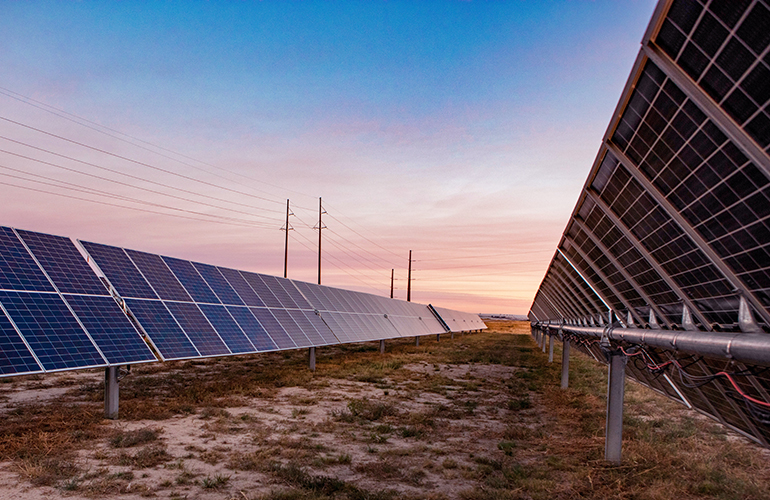The demand for electricity is increasing – and fast. From data centers devoted to artificial intelligence and cryptocurrency, to the electrification of domestic production and transport, the electricity needs are expected to rise to new all time. The National Electrical Manufacturers Association reported in a recent investigation That The demand for electricity of American electricity is expected to grow 50% by 2050Driven by data centers and electrification.

Credit: Ampacity
So how will our nation meet this question, affordable and fast?
The answer is not easy and to date our track record has not been fantastic. According to the Solar Energy Industries Association, the electricity supply has not maintained the question over the past decade. Electricity prices rose 20% from 2020 to 2023, due to a lack of supply and required upgrades to the American transmission and distribution network.
While we navigate in a changing global trade environment, tense supply chains and the continuing threat of inflation, all eyes are focused on the efforts, both of the new generation and the grid infrastructure needed to support this.
All-of-the-above energy?
The reality of the spiking requirement of electricity has both policy makers and investors who speak in terms of an “all-of-the-above” energy strategy. Raster operators such as PJM have made fast track interconnection routes to strengthen the offer, send capacity auctions for crystal clear market signals and long -term plans to dismantle power plants are reconsidered.
But although all electrons can serve the same function, different types and sizes of generators are confronted with very different timelines. For example, units 3 and 4 of the Vogtle -Kerncentrale in Georgia lasted 15 years to convert. Co -running times for guest turbines from leading OEMs can stretch for more than five years. Coal plants are rarely economic to walk and there are currently no development in the United States.
Solar and energy storage are lower costs and twice as fast to implement compared to competing types of generation, but large solar and storage projects will stay in stylish interconnection and permitted processes for years. How can we make more progress in the direction of adding the generation capacity that will meet the moment?
Distributed generation of solar energy must be part of the solution
Renewable energy sources are undoubtedly one of the fastest scalable and cost-competitive ways to deliver electricity. These technologies can be implemented faster than nuclear or natural gas, and their supply chains are much more robust.
Distributed Generation (DG) or “Middle Market” Solar assets, in particular, are a striking solution. DG projects have a less significant impact on overburdened electric grids, they spend less time in Interconnection -Koop rows, so that states offer a feasible and affordable option to meet the rising energy requirements. Solar projects that connect with Utility infrastructure at lower voltages, such as most community centers, can also help to prevent expensive upgrades to substations and transmission lines.
In addition to complying with the electricity needs, DG sun projects create jobs in construction, installation, operations and maintenance, and of course reduces pollution, in contrast to the generation of carbon emberr to. This strengthens the local communities and ensures a healthier environment for the coming generations.
The promise of community sun
In some states, community farms already offer cheap clean electricity and optionality for the customers of electricity customers on a scale for the community. Community Solar Policy has made Gigawatt possible from solar capacity year after year, With a considerable increase of 35% in growth in 2024, led by New York, Maine and Illinois. In the light of the demand for electricity and a crisis of affordability throughout the country, more states are introducing community kisses as an option for their ratepayers.
A recent Analysis by the Coalition for Community Solar Access (CCSA) Emphasizes the benefits that Community -Zonne energy offers apart from the inherent megawatt hours of clean power. CCSA reports that community sages can unlock more than $ 120 billion in economic activity nationwide. Every gigawatt of community setup can support more than 18,000 local jobs and, according to the findings of CCSA, generate $ 2.8 billion in the state’s economic activities.
Speed and efficiency are the key
Building renewable projects, although much faster than other generation sources, is a good business. Navigating on real estate and land rental contracts, overcoming permits and managing supply chain problems can all influence how quickly projects are put into use. That is why it is so critical to bring speed, precision and quality to small-scale and middle market for solar energy.
Although the core components – such as modules, inverters and trackers – attract the most attention, any aspect of the construction of renewable energy can be optimized. For example, consider the enormous amount of work needed to even build a medium -sized community farm. Solutions that simplify fieldwork, streamlining construction processes and can be repeated in full portfolios of small -scale solar projects are crucial for accelerating capacity additives.
As the demand for electricity continues to rise, driven by the expansion of data centers and advanced production facilities, the need for efficient, scalable energy solutions has never been that greater. By making small solar projects repeatable and efficient to perform on a scale, we can add capacity faster and smarter and meet the growing demand without releasing our climate goals.
Bri Bruce is the Senior Marketing Director for Ampacity (formerly RPCs). She came to the company in 2017 and has led the internal and external marketing functions of the company since that time, so that the general strategy of the company is formed and supervises the creation of content, digital initiatives, social media and public relations.

